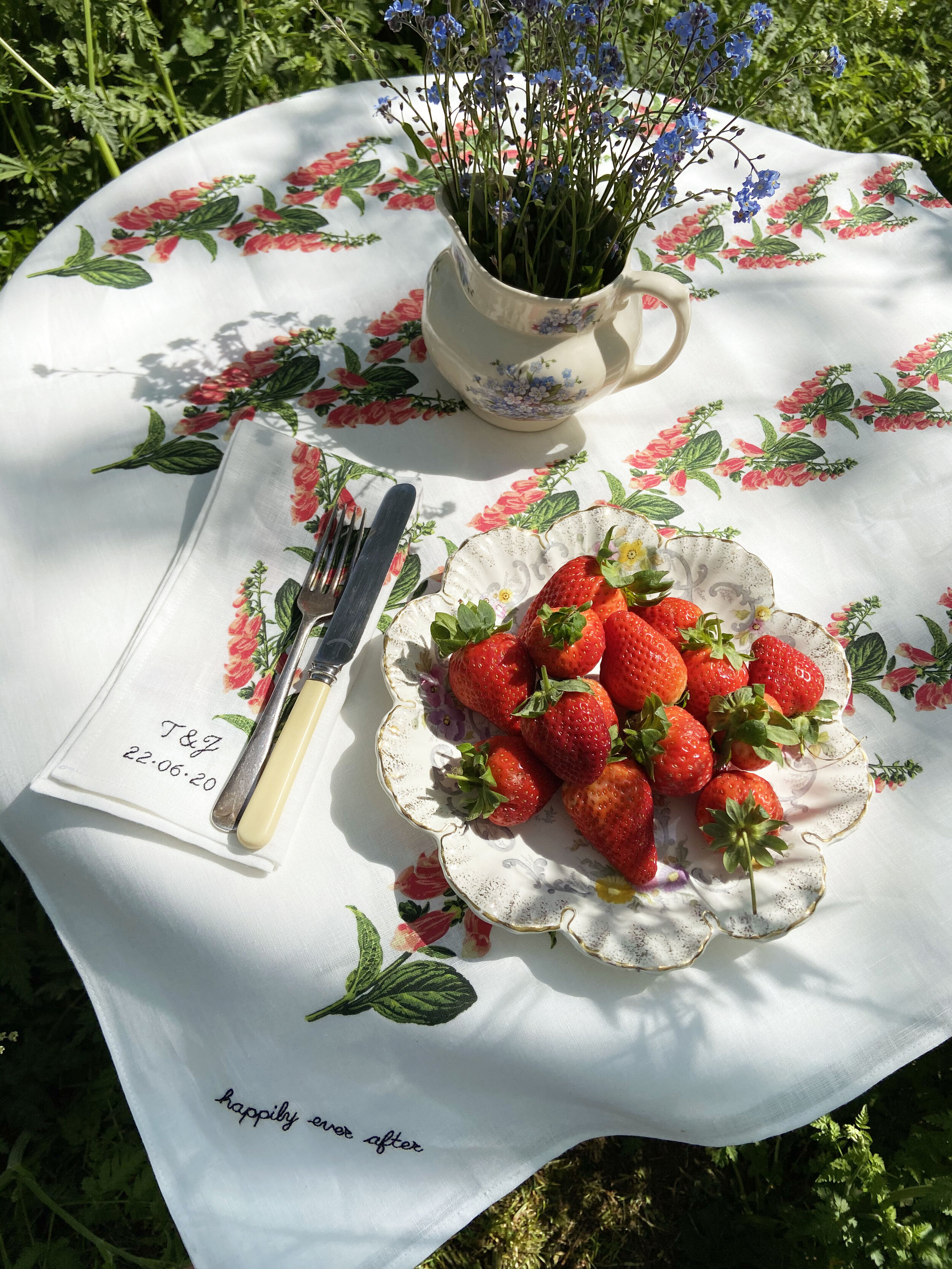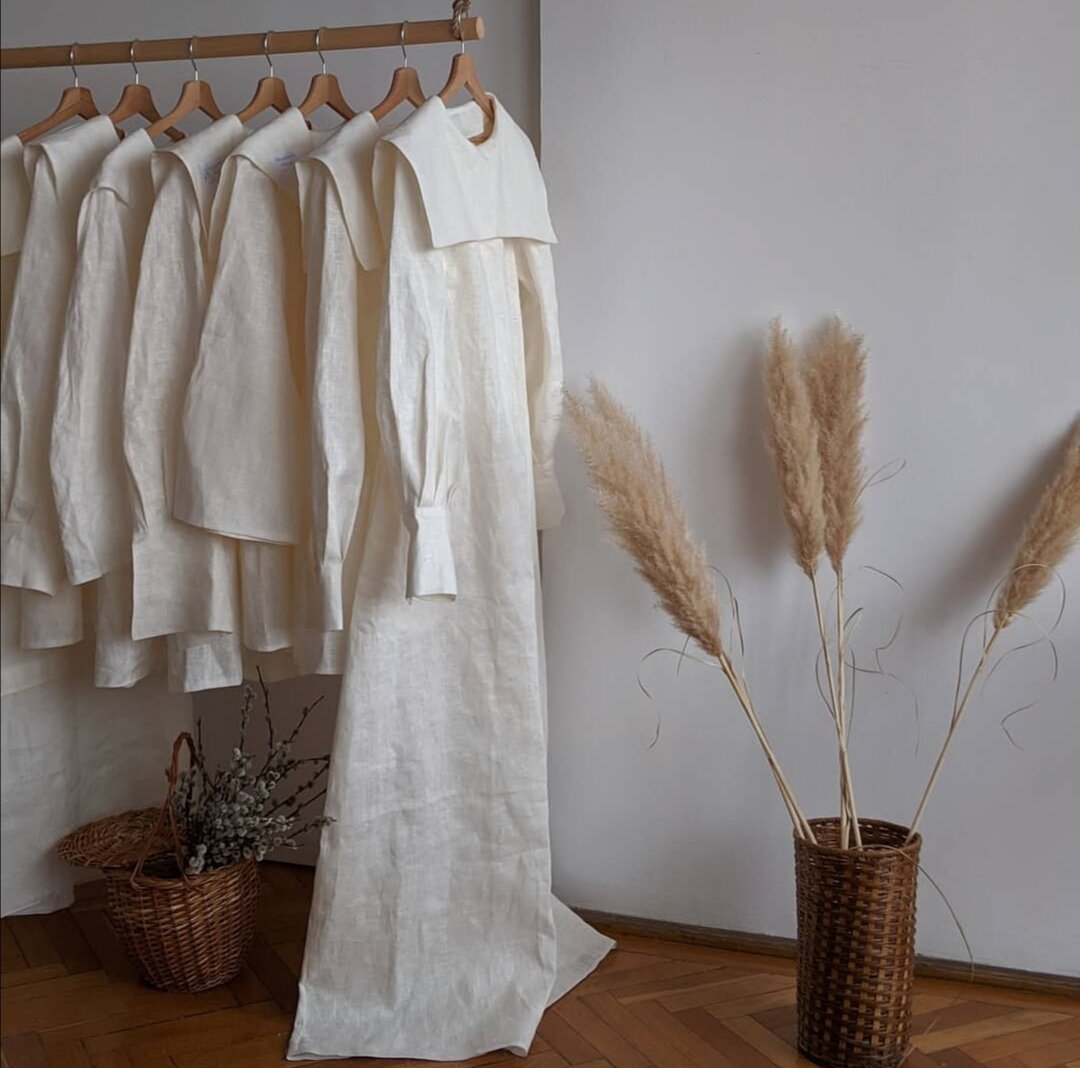Helena Thulin is a brand that I have only recently discovered, and I am obsessed. Taking inspiration from flowers and their fragility, Helena’s jewels are delicate, modern and pieces of art in their own right.
How did you become a jewellery designer?
I studied fashion in Studio Berçot in Paris where I specialised in Knitwear. Having to properly work with a material in an organic way, may it be knit or jewellery now, has always been something that came naturally to me and would really drive my creativity. I wasn’t drawn to jewellery starting into fashion but on another hand that is actually the first form of creation that I experienced as a child as my mum used to teach me and my siblings to shape hearts and animals with beading techniques so now it feels quite funny to come full circle with my first practices. I would say that I’m more of a flower obsessive and it happened that jewellery was the most unusual and accurate way for me to translate that passion. It really started with this need to turn something into flowers that would be a very personal and innovative way to approach it but the proper idea of being a jewellery designer never really crossed my mind and wasn’t something I decided on a first hand.
You have worked with some amazing designers; can you tell me a little bit more about your time with them and what you learnt.
Working in the big industry and especially in such prestigious houses really shaped my tastes first and also confronted me to the reality of the fashion industry. When I left school I was not really aware of fashion as a workplace. I approached it in a more creative and artistic way and I had taste that were more linked to a freedom of expression than linked to what kind of consumer I am and aiming for, so I had to adapt to a very demanding and rushy environment. All my experiences were very nourishing each on different aspects. In Paris I was working in two installed houses that were there from the last century so the dynamic and the problematics are much more different than working for Simone Rocha in London who was a rising designer back then, having to face issues that new brands are facing. Those two major differences would be reverberated within the Houses structure and the way I would interact with all the departments that a House is composed of. In Chloé and Sonia Rykiel I would exclusively work on the knitwear, whereas in Simone Rocha I would have a hint and hand on all the department as we would assist them all. Also I discovered that working with an emergent designer leaves more freedom to explore organically the material when it is more of a reinterpretation of the DNA in older Houses that would makes the handwork less needed as the archives are so rich. So it is really my working in London that got me back on the organic aspects and craftsmanship of the creation and the wish to develop my own designs by keeping the handwork very present.
How do you get inspired?
My inspirations for all the collections always start with two things: a need for specific colours and an idea of the kind of photoshoot I would like to deliver. I can’t really explain where it comes from at first, it can be from browsing through editorials, last shows, paintings, movies and sometimes even the colour of a garment that gets me obsessed. For instance, for the SS20 collection it started with a yellow windbreaker that Björk wore in 1994 (see moodboard). It has to be colours and harmonies that are globals and that can be kind of a reference point to everyone. My two main references though are impressionist and post- impressionist works to even sometimes Pop-Art paintings (everything in Art that I can use as a colour palette actually) and vintage Couture like Dior or Balenciaga that have always impacted me in the brilliant use of colours and the clean and minimalistic aesthetic of the garments that is also something I’m trying to deliver in my collections.
Once I choose the colours I’m always referring to Botanical books and flowers references, that would help me define the kind of flowers I’m about to create and that would also help me mix and match the selected colours. I’m always trying to find the balance between my imagination and the reality when I make the pieces. The flowers have to look the more believable as possible.
Could you tell me a little bit more about your design process and where the pieces are manufactured?
I do start the process by drawing all the ideas I have down and roughly the shapes I have in mind but I never end up keeping those ideas as nothing is more fluid for me in the creative process than properly building spontaneously the pieces with the crystals when I get the colour palette. The beading process and the final aspects of what has to do with the crystals work is made A to Z in the studio. What is manufactured and logo engraved in Italy or in the UK are some parts of the pieces that I am then assembling in Paris.
I didn’t really think of the production when I launched the brand but It felt normal for me to produce where I am as I really want to get a hand on the production as much as on the design process. For the moment the brand is really small and I’m covering myself most of the jobs, from sales to PR but I am working with a back-up freelance when coming into production times if I have short deadlines. But even when the brand will get bigger with more people coming along I really want to keep switching from creation to production as much as I can within the studio.
What is your favourite piece from the latest collection?
I just launched an exclusive collection, THE MINIMUS that gathers all of the best-selling flowers into more wearable and practical stems, so from that collection I would say that it is the ERICA VESTITA. It’s the more sentimental for me as Erica was the name my mother wanted to name me when I was born and it is the flower that first got the Press interested in the brand.
From the AW20 collection I would say all the styles in crystal clear are my favourites. I was a bit afraid to launch them because the use of no-colour flowers scared me a little at first as the brand really focuses on colours, but It actually lifted the styles into very Couture look-alike pieces.
What are you looking forward to in the future?
I am happy to have launched the brand in the midst of this global question regarding the way we consume and the value we put in the objects we buy as handwork is one of my main concern. I really want to lift the craftsmanship and the beading techniques into something that matters as much as the materials used when we are buying. My ideal achievement would be to keep working as a « Couture » label in a way that everything is handmade in the studios but at affordable prices (regarding the respect of human hands value), to pursue this global wish for a better way of consuming.
On a more personal level, I want to be able to grow as a brand and team and be collaborating with other brands and multiplying projects with artists and designers.




































